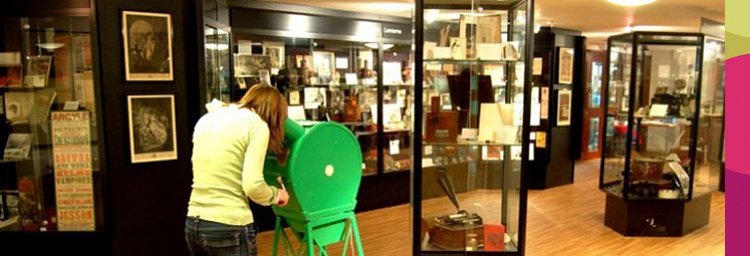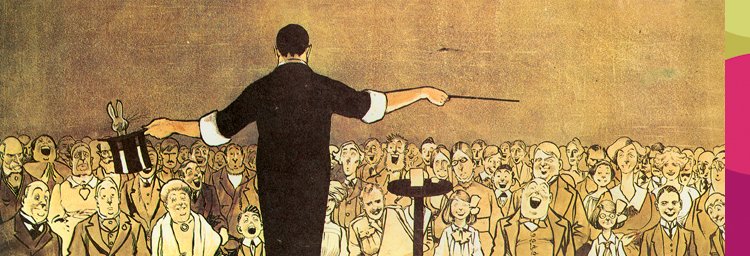For images to move they must be presented to the eye at the rate of at least 10 per second. There must also be a period of blackness between each of the images, so that they do not blur into each other. The brain forms connection between the two images, making it seem like the static images are actually moving. At the beginning of the 1800s toys started to be made to move. Scientists realised that a series of still images could be used to create the effect of a moving image.
Thaumotropes
The Thaumatrope was first sold in 1826. It consists of a disc with two pieces of string attached to it. When the disc is spun between the strings, the images on the back and front blend together to form a single picture. When they were first made, popular pictures included birds in cages, circus performers and the encounters between dogs and cats.
Thaumotropes work on the idea of two images fitting together. Here are some examples of the fronts and backs of the Thaumotropes that we have at the Bill Douglas Cinema Museum, these ones are French. Do you see how the top and bottom image would fit together for each?



The Zoetrope
The Zoetrope (meaning the 'wheel of life') was invented in 1834 in England by William Horner. Pictures were drawn on a strip which could be set around a metal drum, with slits cut into the upper section.

In the example above, once spun the horse looks like it is galloping. The drum is mounted on a spindle so that it could be spun, and viewers can then look through the slits to see the cartoon strip form a moving image. Fast spinning of the drum will produce the smoothest image.
The Praxinoscope
In 1877, Emile Reynaud took the idea of the zoetrope and formed the praxinoscope. It used a drum, just as the zoetrope had, with the images drawn on a band placed around the inside of the cylinder.










